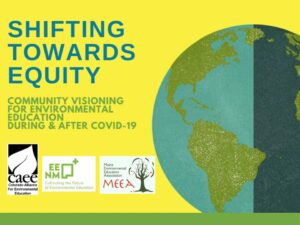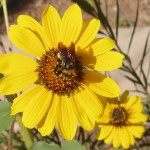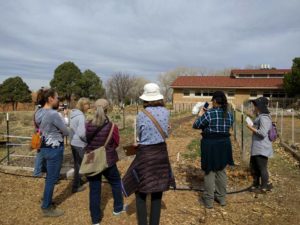Planning for Outdoor Learning for the 2020-2021 School Year, including School Reopening Using Outdoor Learning
Since mid-March, EENM has been providing virtual spaces and communication around ongoing learnings for how to adapt outdoor learning in response to COVID-19 for the outdoor and environmental education community. Through our 16 community check-ins for educators, teachers, program managers, and community members and our tri-state virtual summit Shifting Towards Equity:  Community Visioning for Outdoor and Environmental Education during and after COVID-19 with CO and ME, EENM has been exploring opportunities to adapt outdoor learning for the 2020-2021 school year in equitable ways to support all New Mexican students.
Community Visioning for Outdoor and Environmental Education during and after COVID-19 with CO and ME, EENM has been exploring opportunities to adapt outdoor learning for the 2020-2021 school year in equitable ways to support all New Mexican students.
After reviewing the School Reopening Guidance issued by the New Mexico Public Education Department and the North American Association for Environmental Education’s Guidance for Reopening Schools, along with the community check-ins and the tri-state summit referenced above, we offer the following recommendations for utilizing outdoor learning for the 2020-2021 school year:
Outdoor Learning At Home
Big Idea: Free standards-aligned activities available in multiple languages at grab-and-go meal  distribution sites.
distribution sites.
Highlighted Collaboration: NM COVID-19 STEM Grab & Go Collaboration established in Spring 2020 where STEM and EE organizations partnered to address the structural inequalities of online learning through the development and distributions of activities available in English and Spanish at meal distribution sites. (Thank you NM MESA for your leadership and for hosting these activities, https://www.nmmesa.org/resources/).
Call to Action for Decision Makers: Resource informal educators to support outdoor learning at home. There are hundreds of outdoor and STEM informal educators in New Mexico that are trained and ready to supplement remote learning through providing standards-aligned activities that are accessible. This will help ease the burden of teachers and put furloughed and laid-off educators back to work.
Outdoor Learning in Community
Big Idea: Deploy the informal education community to local parks, open spaces, and other public lands to support families in outdoor learning through self-guided tours/activities (visibly posted in multiple languages at access points) and to meet and greet families utilizing these areas. Educators can meet  families at access points (e.g., parking lots) and interact with families (utilizing COVID-safe practices) to provide information like Leave No Trace principles and ideas for families to have a safe, engaging experience outdoors. This will also reduce the pressures put on public lands in and around urban areas that have been heavily used in the summer of 2020.
families at access points (e.g., parking lots) and interact with families (utilizing COVID-safe practices) to provide information like Leave No Trace principles and ideas for families to have a safe, engaging experience outdoors. This will also reduce the pressures put on public lands in and around urban areas that have been heavily used in the summer of 2020.
Call to Action for Decision Makers: Resource informal educators already trained with experience in outdoor learning to these access points. Provide training (including COVID-safe practices) for these educators to safely interact with the public in these areas. This will put furloughed and laid-off educators back to work.
Outdoor Learning at School
Big Idea: Create or enhance outdoor schoolyard spaces that can serve as outdoor classroom areas to support school reentry. Include students, teachers, administrators, school staff, parents/guardians, and  community members in the design of these spaces. Once spaces are created, support teachers with training and standards-aligned activities to utilize them.
community members in the design of these spaces. Once spaces are created, support teachers with training and standards-aligned activities to utilize them.
Call to Action for Decision Makers: Resource the creation or enhancement of accessible outdoor
classroom spaces in schoolyards for every New Mexico school. Ensure that these spaces are designed with those at all levels and include plans and resources for ongoing maintenance of these areas. Support and resource the training of safe use of these spaces.
EENM is working with NAAEE Affiliates including the Colorado Alliance for Environmental Education and Maine Environmental Education Association on a brief that will provide more details on the above recommendations.
